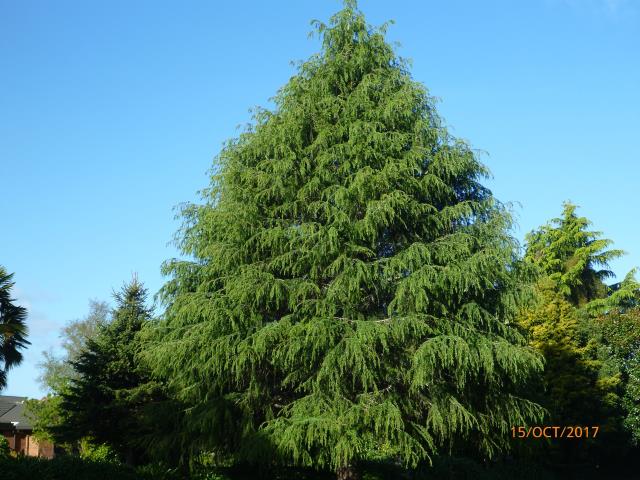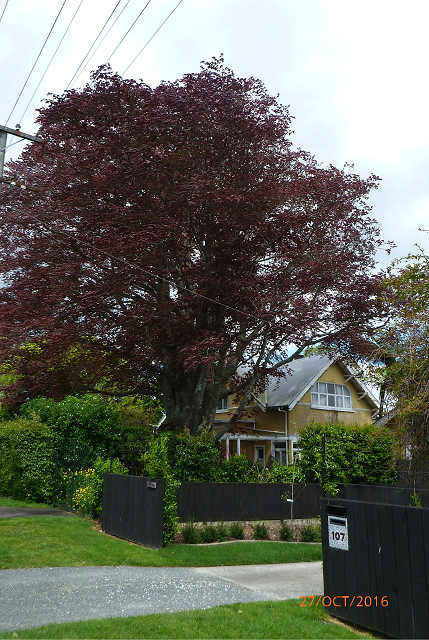Notable trees

Cedrus deodara
As its name suggests the deodar is native to the Western Himalayas in eastern Afghanistan, northern Pakistan and India, southwest Tibet and Nepal. It usually grows at altitudes of 1500 to 3000 metres in mixed forests with other conifers and broadleaf trees such as oak, chestnut, maple and birch. At maturity the deodar may reach 50 or 60 metres in height, and the oldest known living one is 745 years. Both drought and cold hardy, it has an attractive pyramidal form with pendulous branch tips, beautifully demonstrated by this specimen growing in Lamb St.
In India the deodar is a sacred tree; its Sanskrit name, devadaru, means wood of the gods. Hindu legends frequently refer to the tree, and deodar forests were favourite dwelling places for Indian sages. It is used in Ayurvedic medicine and aromatherapy; the essential oil of the inner wood is effective as insect repellent and fungicide. This inner wood is used in buildings for storing meat, spices and grain. Although deodar is a brittle wood it is rot-resistant and was therefore in demand for building, especially for temples, and also houseboats. It is close-grained and will therefore take a high polish. During the British colonial period deodar was used to construct barracks, public buildings, bridges, canals and railway carriages. Today in the West the deodar is usually an ornamental tree, but in New Zealand it is also often used for shelter on dry slopes.

Fagus sylvatica
These stunning large purple trees (and their green siblings) with their graceful foliage and smooth silvery bark dignify a number of parks and private gardens in Cambridge. The one shown is a protected tree on a Bowen Street property. The beech belongs to the ‘royal family’ of European broadleaf trees; the family includes oaks and sweet chestnuts, all linked by the form of their fruit. It used to be said, ‘the oak for a king and the beech for a queen’.
There are wonderful beech forests in the chalky Chiltern Hills in England, but the species is thought to grow to perfection in Normandy, France. In forests near Rouen the trees lose all their lower branches and cast a deep shade, their bare trunks soaring to 100 feet beneath a dense green canopy. One writer imagines that they may have been the inspiration for the magnificent Norman cathedrals, both in sight and sound, for an old beech wood has the longest echo of any woodland.
Beeches have an ancient history. When copper beeches turned up in the wild they were once rumoured to be a sign of an ‘unnatural crime’ after which the ‘blood refused to lie down.’ Less fancifully, beeches have been used from ancient times to make furniture, kitchen utensils, clogs, fine carved toys and printing blocks for woodcut illustrations. The wood is easy to work for turning, carving and steam bending, and with its fine grain gives a nice finish. In the 18th and 19th centuries it was used in the production of decorative mouldings for furniture and picture frames, and more recently for hard-wearing domestic flooring and the finishing layer of laminates.
The Cambridge Tree Trust was registered with the Charities Commission as a Charitable Entity under the Charities Act 2005 on 16 August 2007. Registration No: CC10859

